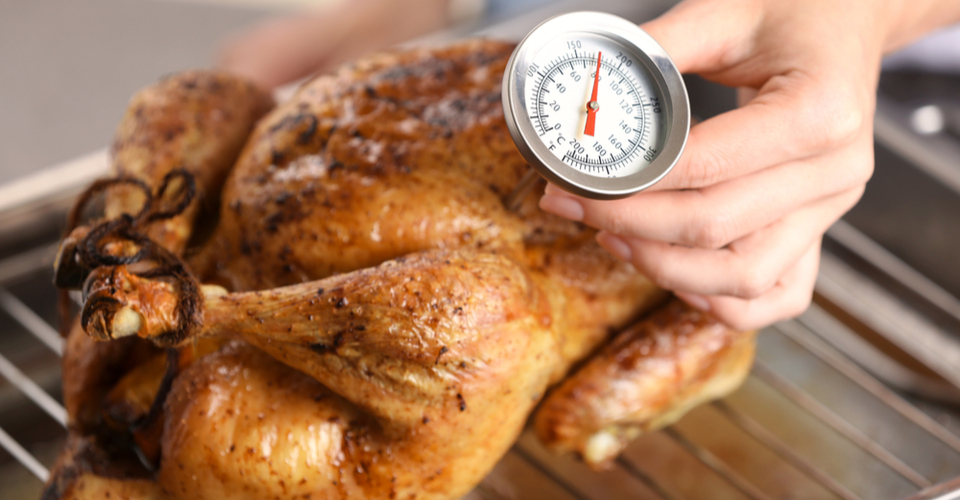The Centers for Disease Control and Prevention (CDC) has provided some considerations and modifications to help protect your family from COVID-19 this holiday season. And with Thanksgiving and other holiday festivities right around the corner, many of us are prepping to try and bring some normalcy to this season.
For some, that means feasting on traditional holiday staples, like turkey, pumpkin pie and endless casseroles. While our focus might be on the endgame of having full and satisfied bellies, safety should remain at the top of your priority list.
Here are some food safety tips to keep in mind when handling and cooking your Thanksgiving turkey.
Thaw your turkey safely
According to the CDC, the most common problems that lead to foodborne disease outbreaks related to poultry (chicken and turkey) are handling it incorrectly and undercooking it.
To keep your meal safe, start by thawing your turkey at a safe temperature.
Don’t leave your turkey on the counter to thaw. When poultry is left out at room temperature for more than two hours, it starts to enter the “danger zone” (40ºF to 140ºF) where bacteria can grow rapidly.
Instead, thaw your turkey by placing it in:
-
A container in the refrigerator.
-
A leak-proof plastic bag in a sink of cold water. Make sure to change the water every 30 minutes.
-
The microwave.
If you choose to use the microwave, be sure to follow the manufacturer’s instructions.
Prevent the spread of bacteria
It’s important to be conscious of how you’re handling your turkey as raw poultry can quickly spread harmful bacteria throughout your kitchen.
Here’s how to prevent the spread of bacteria.
-
Wash your hands before and after handling turkey.
-
Don’t wash your raw turkey. The juices can unintentionally spread to other foods, utensils and your countertops.
-
Don’t use the same cutting board, serving dishes, utensils or other surfaces that raw poultry has already touched.
Once you’ve prepared the turkey, immediately wash all used items with hot soapy water.
Cook your turkey thoroughly
Set your oven to 325ºF or higher. And cook your completely thawed turkey until it reaches a safe internal temperature of 165ºF.
Use a food thermometer to check the thickest portions of the turkey (e.g. the breast, thigh and wing joint).
If your family will be enjoying stuffing this year, be sure to also insert your food thermometer into the center of the stuffing to ensure it reaches an internal temperature of 165ºF. Otherwise, bacteria can survive and may cause food poisoning.
Check out this resource from the USDA Meat and Poultry Hotline if you plan to take an alternate route to cooking your turkey this year.
Take care of leftovers
Bacteria can grow in cooked foods when they’re left at room temperature, which can lead to food poisoning symptoms like vomiting and abdominal cramps.
Make an effort to refrigerate or freeze leftovers as soon as possible.
Divide large cuts of meat or other dishes into smaller quantities, so they can cool quickly for refrigeration. And throw away any turkey, stuffing or gravy after it has been left out for over two hours.







.png?width=600&name=HSI-CTA-EmergencyCareTraining%20(1).png)











Comments